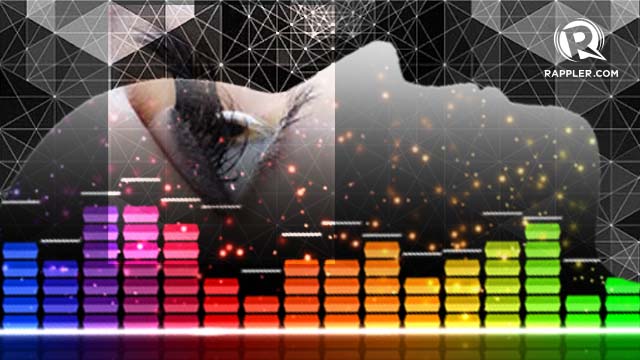SUMMARY
This is AI generated summarization, which may have errors. For context, always refer to the full article.

Ever wondered why a water heater, or any appliance for that matter, would come in neon green, black, blue or white when it will do what it should according to manufacturing specifications, regardless of color?
Non-scientists take it for granted that “color” is a natural “pop-up” in the choices we make when we experience music or when we buy stuff we want or need. But most of us don’t really think about “why.”
Why did I get a black-and-white water heater instead of the neon green one as my first appliance when I got married? I just know that after that, I picked either just black or white furniture and when my husband and I were asked why, we just answered “Blame the water heater.”
But did you ever think about what the color of music is? What colors do you think you would pick to represent certain music that you hear? Why?
For music, it turns out that humans are really wired to associate the emotions they feel with colors. Scientists in UC Berkeley found this out when they subjected 100 participants to 3 experiments making them listen to 18 pieces of classical music composed by Johann Sebastian Bach, Wolfgang Amadeus Mozart and Johannes Brahms (that differed in being slow, medium, fast and in major and minor keys) and made them pick the color they “see” from a palette of 37.
Half of the participants were from the Bay Area and half were from Guadalajara, Mexico. The scientists picked the subjects from these different areas to see whether it is not just the local culture that dictated the emotions, and thus the color associations that resulted from the experiment.

The scientists conducted 3 experiments where they found out that emotions seem to be the mediator between music and colors, between faces and colors and music and faces. For the first one, vibrant colors were always associated with upbeat music and major keys moving to dull to darker colors for sad music and minor keys. For the face and color experiment, the subjects were asked to pick the color that matched a facial expression. As predicted, the more vibrant colors (oranges and yellows) were associated with happy faces, while the darker ones with sad, angry faces.
For the last experiment on music and faces, the same associations held true. The results were so remarkable that the scientists could predict within a 95% accuracy what color is associated with which music. The study by Stephen Palmer, Karen B. Schloss, Zoe Xu and Lilia R. Prado-León was published online in the Proceedings of the National Academy of the US last May 13, 2013.
Now we know that our brains cannot help but listen to music and associate it with a color. Some people who have synesthesia — a condition wherein when one sense is stimulated, another sense is also stimulated — really see colors out there when they hear music.
This proves that our brains are wired to connect emotions and music. And thanks to other experiments the scientists later conducted, we have also confirmed that indeed, we are wired to connect faces and music and color. There is such a thing as happy or sad music, with colors and faces to match it, across cultures.
I think more experiments have to be carried out with other kinds of music. I am particularly curious as to what color people will generally pick to match music like “rave,” “technomusic,” or “metallica.” I already found out in an experiment I took part in that my physiology reflected “disinterest” when I listened to music I hated.
I thought my vitals would be in a roar listening to music I abhorred, but my body just tuned out. Now I want to know, what colors would these kinds of music elicit from my head? Also, would the differences in color this time depend on the generation of listeners? And what would those differences say about how we are able to understand each other’s different emotions given the same piece of music?
Maybe that is what makes music a universal key to our humanity. It unlocks the most vulnerable chamber inside our personalities — which is our limbic system, responsible for emotions — letting loose its sparks to zoom across pathways in our head, zeroing in on colors and faces to match the highs and lows, strengthening and deepening the experience even more.
Maybe that is why music is not just dessert as neuroscientist Steven Pinker once wrote. Maybe music and emotions are the ones that ignite the constant temperature in the neural kitchen of our passions. And most of us probably thought that it was simply background piped-in music for our quotidian lives. – Rappler.com
Maria Isabel Garcia is a science writer. She has written two books, “Science Solitaire” and “Twenty One Grams of Spirit and Seven Ounces of Desire.” Her column appears every Friday and you can reach her at sciencesolitaire@gmail.com.
Add a comment
How does this make you feel?
There are no comments yet. Add your comment to start the conversation.